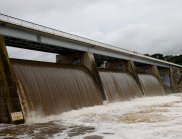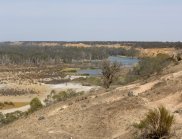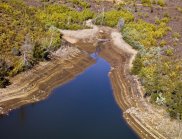SEACI taps into future water availability
The SEACI Phase 2 Synthesis Report, Climate and water availability in south-eastern Australia, to be launched at the initiative’s annual workshop in Canberra, addresses key science questions behind the causes of climate variability and change, and their impacts on water availability across the Murray–Darling Basin, Victoria and southern South Australia.
SEACI research provides evidence that there appear to be long term reductions occurring in cool season rainfall across south-eastern Australia, and that these changes are at least partly attributed to climate change.
SEACI research provides evidence that there appear to be long term reductions occurring in cool season rainfall across south-eastern Australia, and that these changes are at least partly attributed to climate change.
“The cool season is the traditional ‘filling season’ for water supply systems across most of south-eastern Australia, and SEACI research reveals this important cool season rainfall may be less reliable into the future,” SEACI Program Director David Post said.
“SEACI research shows the reduction in cool season rainfall is caused by an expansion of tropical influences, driven by the Hadley Circulation expanding at a rate of 0.5° of latitude (approximately 50 km) per decade, pushing mid-latitude storm tracks further south and leading to reduced cool season rainfall across southern Australia.”
“Our modelling shows this observed expansion of the Hadley Circulation can only be reproduced if human influences (such as greenhouse gases, aerosols and stratospheric ozone) are included in the models. This provides evidence that observed changes in large-scale atmospheric circulation patterns affecting south-eastern Australia are at least partly attributable to climate change.”
“If the southern section of the SEACI region (south of Sydney) experienced a 1°C warming, the average annual rainfall is expected to decline by between 0 and 9 percent and average annual runoff by between 2 and 22 percent. These reductions could double with a 2°C warming.” Dr Post said.
“Climate projections show a range of possible impacts, and water resource managers need to ensure that their planning and management processes are robust and can adapt to a wide range of future climate and streamflow scenarios.”
SEACI also contributed to improvements in the seasonal forecasting of rainfall and streamflow across south-eastern Australia, with forecasts available online at Seasonal Streamflow Forecasts (Bureau of Meteorology) . These improved forecasts will assist resource managers and users in adapting to a variable climate.
The second phase of SEACI (2009-2012) was a A$9 million partnership between CSIRO, the Bureau of Meteorology, the Murray-Darling Basin Authority, the Victorian Department of Sustainability and Environment and the Australian Government Department of Climate Change and Energy Efficiency.
A podcast of Dr David Post discussing SEACI research is available at Come rain or shine: south-east climate changing and the report is available from the SEACI website: SEACI Phase 2 Synthesis Report .
Media resources
Images: Click image for high resolution version
Audio: Come rain or shine: south-east climate changing (Dr David Post)



